| November News 2021 | | | If you graced the clinic on Friday 29th November, you could've seen some spooky things happening, with strange clothes and carved pumpkins. Pictured are Bridget and Andrew Denman, matching for the day, with Elle's crafted witches hat. Amber got in the spirit of pumpkin carving. Fortunately, none of the patients seemed phased by the outfits!
You might see some new (and not so new) faces around the clinic too- Gemma is joining us in the nursing team, so make her feel welcome, and Rhys will be helping out on some weekends so don't be surprised to see him around!
We are also welcoming many vet students with us over summer- they are keen to learn. You might see extra faces in consults or out calls- and they will happy to give extra cuddles to the pets! We are excited to be training the next generation of the veterinary profession. | | | Contact Us |
|
|
 | | Lilies- NOT nutritious | | | Did you know that lilies and cats should not mix? Curious cats often get themselves into mischief. Unfortunately, the whole plant is toxic- the stem, the leaves, the flowers, the pollen that falls as the flowers wilt, and even the water that the flowers sit in. It is an old wives tale that the stamens can be removed and the rest of the flower left- it too is toxic for cats.
All members of the lily family are toxic. Some cats will even just brush past lilies and get pollen on their coat, which they then groom off and cause poisoning. Your cat may show a number of signs if they are poisoned, including drooling, lethargy, anorexia, vomiting, and even lameness. Sometimes the first time of poisoning might be yellow staining around the face, where pollen sticks to the fur.
We were lucky enough last month to get a little cat home after lily intoxication from this beautiful bunch of lilies above sitting on a piano. After days of fluid therapy, hospitalisation, and repeated blood tests, we were able to get her home safely.
Sadly, cats are unlikely to learn a lesson- but we write this so humans can! Lilies are not a good house plant with cats in the household. If you are buying flowers for a cat owner, it can be best to stick with natives or roses.
So what to do if your cat has eaten lilies? Call the vet. Even after hours, we have a vet available for emergencies just like this. If you know that your cat has eaten lilies, the veterinarian may be able to arrange decontamination, blood tests, and/or hospitalisation, depending on the timing of the ingestion, and the clinical signs that your cat is showing.
|
|
|
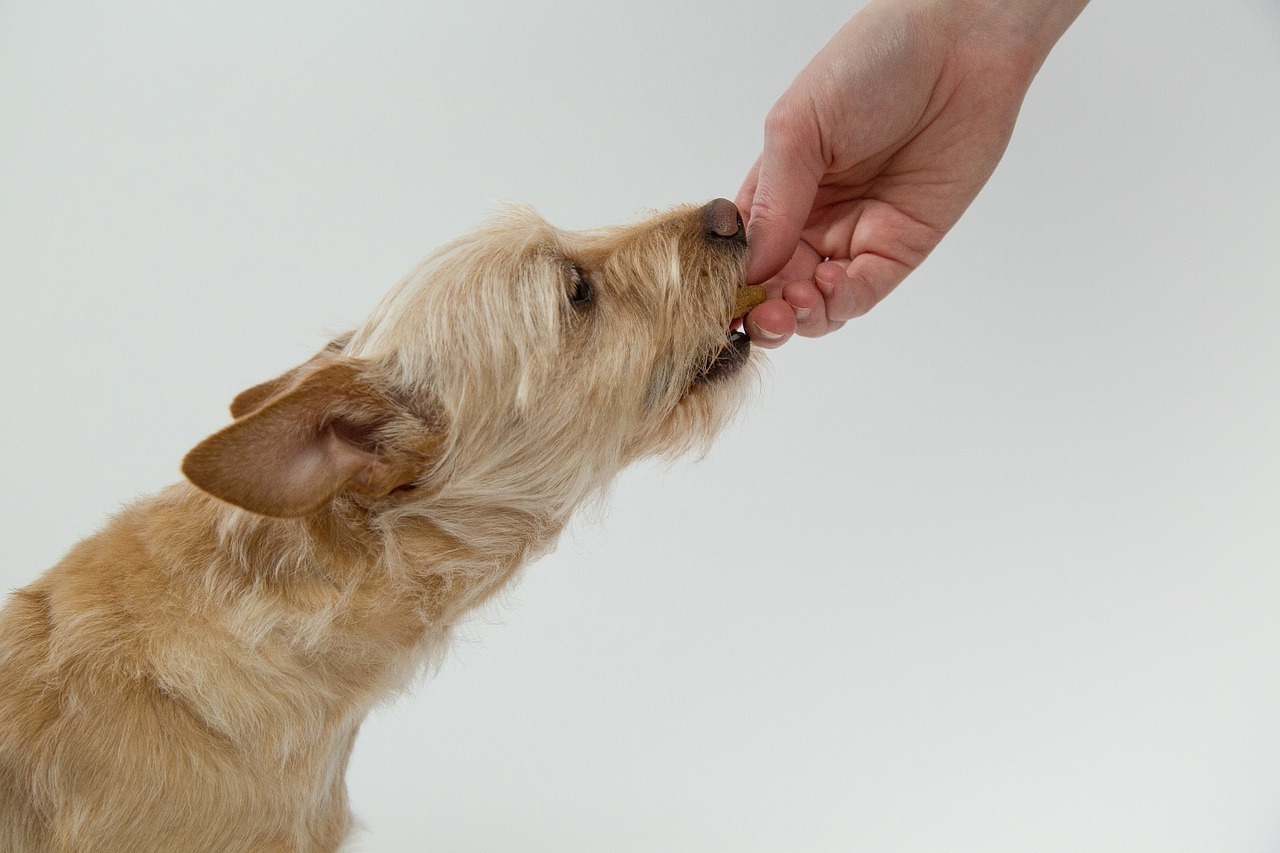 | | Household hazards | | | Unfortunately, dogs and cats seldom think before putting things in their mouths. Whilst hopefully the worst of the rat bait has gone, the festive season and household visitors often bring unexpected objects into the house- some of which can be toxic and even fatal.
Indoors, artificial sweeteners like xylitol that be found in chewing gum, and 'healthier' baked goods play havoc with insulin regulation in pets, and can cause life threatening hypoglycaemia. Pets can progress to unconsciousness.
Grapes and raisins are another tricky topic- vets aren't sure why, but some dogs exposed to some grapes can deteriorate to kidney failure. It's not every dog and not every time, but it's best to avoid grapes and sultanas for dogs. Research is currently underway to find the toxic principle.
Medications and recreational drugs can also be consumed by animals that were not intended. Unfortunately, even medications that are safe in people can be very damaging for pets due to the size differences. Differences in metabolism also plays a role, for example, paracetamol can be fatal in cats, regardless of size.
The silly things that animals put in their mouths is endless- batteries, anti-freeze, and even too much salt, like in playdough, can cause a drama. Gifts wrapped under the Christmas Tree, especially chocolate, are often sniffed out. Using dog medications on cats can also be fraught with danger. Pet proofing your house can be a great start, and having phone numbers handy in case of an emergency is the next best option.
If your pet is unwell after a toxin, we have an after hours vet available. Another option for advice can be the Australian Animal Poisons Helpline. It is a non-profit charitable organisation that provides rapid, up-to-date and evidence-based poisoning advice to pet owners. The service is FREE for all pet owners in Australia and New Zealand and aims to reduce the morbidity and mortality that is associated with animal poisonings. To get in contact, call 1300 TOX PET.
|
|
|
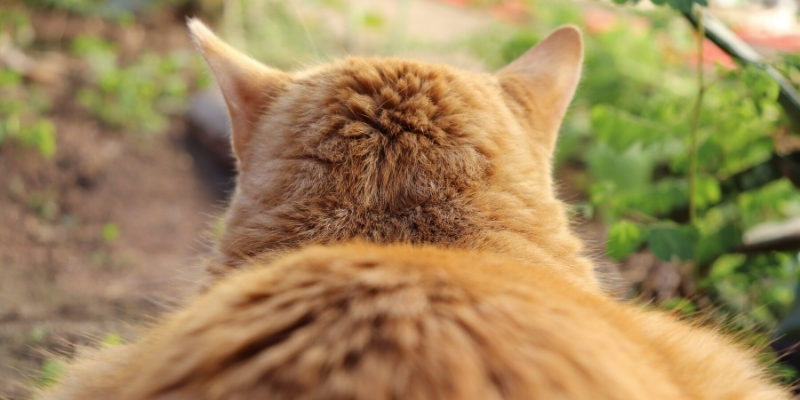 | | “It’s my hormones!” | | | Whilst changes in a pet’s body condition are often related to lifestyle factors such as diet and exercise, did you know that there are some cases where significant weight changes can be the result of an underlying medical issue? This includes endocrine conditions (hormonal imbalances), which can actually alter your pet’s metabolism!
What endocrine diseases can cause weight changes?
Endocrine diseases that can cause weight loss include:
- Diabetes mellitus
- Hyperthyroidism
- Hypoadrenocorticism
Endocrine diseases that can cause weight gain include:
- Hypothyroidism
- Cushings disease (hyperadrenocorticism)
How do we diagnose endocrine diseases?
These endocrine diseases will generally cause other noticeable symptoms in affected pets too. Depending on the particular disease, there may be changes in:
- Appetite
- Drinking and urination levels
- Gut health, leading to signs such as diarrhoea or vomiting
- Skin and coat quality
- Behaviour
- Heart health
- Neurological signs, like lethargy or stumbling
If you notice any alterations in your pet’s normal activities and/or any unexplained weight changes, it’s a great idea to book a consultation with one of our veterinarians for further assessment.
Depending on your pet’s symptoms, our vets may recommend further diagnostic testing. This is usually best started with general blood and urine tests (measuring red and white blood cell levels, glucose levels, organ function and thyroid hormone levels), where in many cases, we will see “red flags” for these endocrine imbalance conditions.
Based on the blood test results, we will then be able to discuss whether further specific testing is required to confirm your pet’s condition. This can include specialised hormonal blood tests or abdominal ultrasound.
If my pet does have an endocrine disease, can it be treated?
Rest assured that in most cases of an endocrine disease, the condition can be either treated or managed with long-term medication.
Once the condition is under control, your pet’s symptoms should reduce or normalise, including their cheeky weight changes! |
|
|
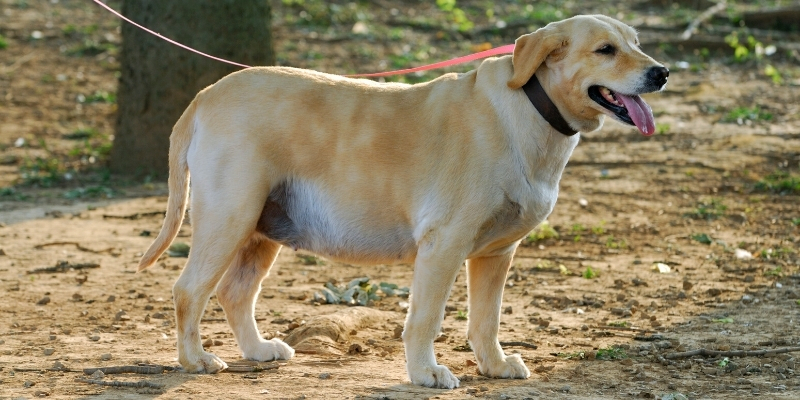 | | The secret to a long and prosperous life | | | What if we told you that there was one thing that you could do to help keep your pet healthy, reduce their risk of many common diseases, and maximise their lifespan?
The answer? Keep them in a slim, healthy body condition!
Unfortunately, being overweight can have many negative effects on your pet’s health. Obese pets are at a much higher risk of developing heat stress in summer, which can be a potentially fatal condition. This is due to their increased heat retention, and because being overweight often worsens any pre-existing respiratory issues (such as collapsing trachea, or brachycephalic airway disease in flat-faced dogs).
Being overweight can also increase your dog’s risk of developing joint damage, which can lead to painful arthritis later in life. This is the case in both obese adult dogs (who are more likely to rupture their cruciate ligaments or develop bulging spinal discs), and overweight growing pups (who are more likely to develop significant symptoms of hip or elbow dysplasia if they are already a predisposed breed).
For breeding animals, being too fat or too skinny can also be associated with decreased reproductive health, like failing to conceive or small litter sizes. This is a good point to discuss when you are preparing with pre-breeding examinations.
Lastly, recent research has indicated that rather than just “sitting around”, fatty tissue is actually biologically active, and releases inflammatory hormones that can contribute to your pet developing certain cancers, or diseases such as diabetes, as well as worsening other inflammatory conditions.
Long-term studies have indicated that, sadly, obese dogs can have a shorter lifespan compared to lean, healthy dogs by an average of six months to two years!
How can I help my pet?
If you’re unsure about your pet’s healthiest weight, book a consultation with our helpful team. We can assess your pet’s body condition and, if they’re overweight, advise accordingly on a safe and effective weight loss regime.
Let us help tip the scales in your pet’s favour. Why “weight” to help your pet become happier, healthier and able to stay with you as long as possible? |
|
|
 | | Shedding those excess canine kg’s | | | It’s estimated that up to 50% of dogs are overweight, and in many cases, their well-meaning owners may not actually realise!
Body condition scoring is a useful way of objectively assessing your pet’s weight through comparing them to a pictorial scale, such as this one from WSAVA.
If you compare your dog to the scale and feel they might be overweight, we’d recommend booking them in for further assessment, where we can advise on a safe, effective weight loss control program. In some cases, we may also suggest blood tests to rule out any medical cause of excessive weight gain, such as hypothyroidism or Cushing's disease (hormonal imbalances that can slow your dog’s metabolism).
Weight loss diet
Unless your dog has any specific nutritional requirements (such as food intolerances), we recommend switching them to a prescription weight loss diet, given in strictly measured amounts as advised by us. We even have a 4 Paws Kilo Club! These prescription diets have higher levels of protein and fibre to promote feelings of fullness, and increased levels of nutrients to ensure your pet doesn’t develop any malnutrition (which can occur when restricted amounts of regular dog foods are fed).
It’s really important that we discuss any additional treats that you feed your pet – these will likely need to be reduced, and/or switched for lower calorie options!
Exercise
Depending on your dog’s current condition, and any potential underlying medical issues they may have, our vets can advise on a safe exercise routine for them. Often swimming provides a safe, low impact exercise option, for pets that like the water. This can gradually be increased as your dog becomes more fit and mobile!
With weight-checks every two-to-four weeks, we can help support your dog’s safe and steady weight loss. Achieving their ideal weight will not only help them to feel healthier and more comfortable, but can also prolong their lifespan by up to one-to-two years! That’s off the scales! |
|
|
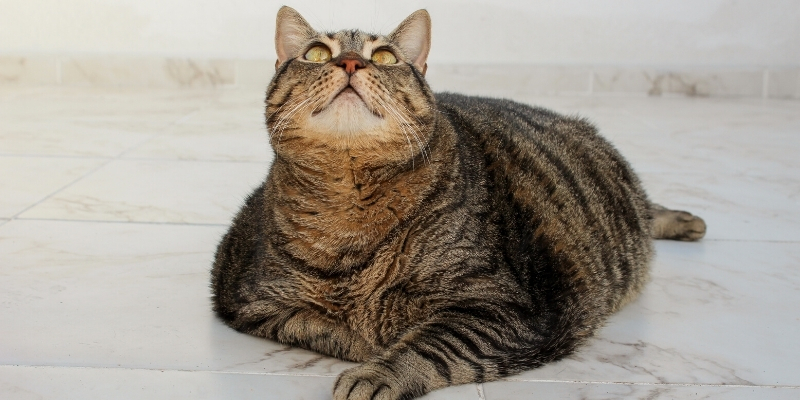 | | Fat cats | | | Unfortunately, feline obesity is increasingly common, and brings with it an increased risk of issues such as diabetes, fatty liver disease, urinary tract disease and arthritis.
If you think your cat may not be at their ideal healthy weight, it’s best to bring them into the veterinary clinic for an objective assessment. If they’re found to be overweight, we can then advise on a personalised weight loss plan to get them back to their ideal weight, with monthly weigh-ins to check their progress. Don’t worry – we will be very supportive and reassuring to any “excessively cuddly” cats!
In general, the easiest diet plan involves switching your cat to a high-quality prescription weight loss food, and providing strictly weighed portions. Feline weight loss diets tend to be lower in carbohydrates and higher in protein and other nutrients, to ensure your cat doesn’t develop any nutrient deficiencies.
In addition to your cat’s prescription weight loss diet plan, we’ll also recommend ways to increase their activity levels. This can include techniques such as scattering dry food around the house, moving the food bowl around to encourage movement, providing exciting kitty-climbing frames and encouraging play with enticing toys! Sometimes novel food delivery methods, like the Cat IT Senses Tower (below) can be a good idea.
At your cat’s monthly checks, we may adjust their diet plan as required to ensure they’re making safe, gradual progress on their weight loss journey. In cats, it’s best to aim for very gradual weight loss, as rapid fat loss can cause liver problems. Very overweight kitties can sometimes take up to a year to healthily shed their excess weight, and that’s OK, provided they’re moving in the right direction!
Once your cat has reached their target weight (woo hoo!), we can then advise on a healthy weight maintenance program to help ensure those cheeky kg’s don’t sneak back on.
With our team’s support, your cat can enjoy their “summer body” - all year round! |
|
|
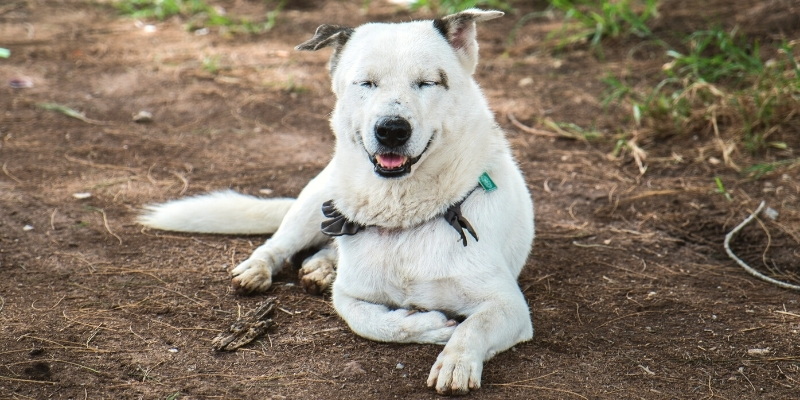 | | Not just a “lazy bones”! | | | If your dog seems to be tiring quickly on walks, don’t just chalk it up to “laziness” or old age. Certain medical issues can also reduce exercise tolerance – here are a few common ones that are worth bearing in mind for any older pet who’s slowing down a bit!
Mitral valve disease (heart disease)
This is a gradual thickening of the mitral valve inside the heart, which can cause progressive signs of decreased exercise ability, breathing difficulties and sometimes even fainting episodes or a swollen belly.
Some smaller breed dogs (such as cavalier King Charles spaniels, mini Poodles, Shih Tzus, Maltese, mini Schnauzers and Cocker Spaniels) are predisposed to this issue, particularly when middle-aged to older.
Osteoarthritis
It’s estimated that over 80% of dogs will have some degree of arthritis by eight years of age or older! Fortunately, there are manby useful medications and supplements for arthritis.
Dogs particularly at risk of arthritis symptoms are those with pre-existing joint issues (such as hip dysplasia or luxating patellas/ loose kneecaps) or injuries, very active dogs and overweight dogs.
Symptoms of arthritis include a pet being slow, stiff and uncomfortable, particularly after particularly exuberant exercise or lying down for a while. Affected pets may also show reluctance to jump or climb stairs, or intermittent limping.
Laryngeal paralysis
This is a condition that most commonly develops in middle-aged to older large or giant breed dogs, particularly Labradors and Labrador crossbreds, like Labradoodles.
Laryngeal paralysis involves a progressive nerve deterioration that prevents proper opening of the throat muscles during breathing. The most common symptoms are raspy or wheezy panting (particularly during exercise), reduced exercise tolerance and a changed bark, though affected pets may develop gradual weakness of their legs over several months as well. This can be very serious.
Therefore, if your dog ever shows reduced exercise ability, we recommend that they come in for a visit with our lovely team. We can assess them for any potential underlying medical issues, and hopefully help put the wind back in their sails! |
|
|
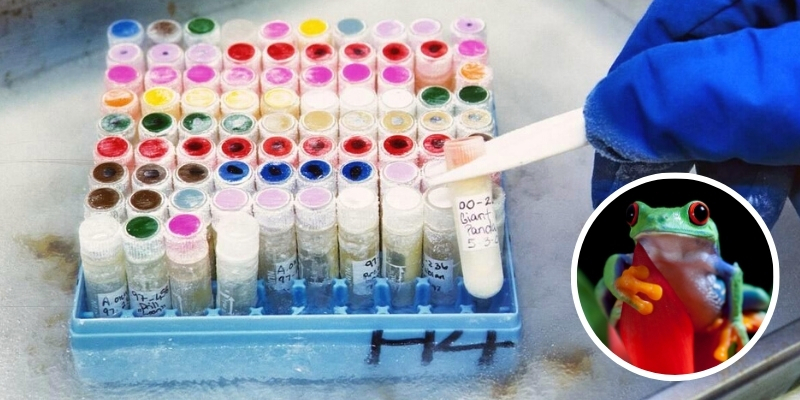 | | The frozen future of conservation | | | Ever heard of biobanking? It’s a method of collecting and storing biological samples for research. Often used for human data, the concept is now being implemented for the conservation of Australian wildlife. The Australian Frozen Zoo, based in Melbourne, is granting native, at-risk species a new chance at survival. By collecting living cells and genetic material, such as sperm, frozen zoos can combine biobanked material with assisted reproductive technology to revolutionise wildlife conservation. And at the top of the list at the Australian Frozen Zoo are amphibians.
In an article by SciTechDaily, Dr Simon Clulow, a senior researcher from the Department of Biological Sciences at Macquarie University, stressed that more than 200 amphibian species are currently in urgent need of conservation intervention, and over a further 700 need captive populations, however traditional captive breeding programs pose too many obstacles to be seen through for every species in need.
Captive breeding has had many success stories, such as the survival of the giant panda, but sadly, program maintenance is not easy.
Firstly, captive breeding is expensive. To maintain just one species in a captive breeding program can cost more than $200,000 a year. Unfortunately, the programs are already underfunded, and as each program needs to go on for several years or decades before its objectives can be achieved, many species won’t get their chance.
Secondly, there are complications with the effects captive breeding can have on animals. As generations adapt to the environments, captivity can domesticate the animal, altering their behaviour and ultimately hindering their ability to survive or reproduce in the wild.
But biobanking gives us hope.
Researchers say that freezing endangered species’ genetics not only dramatically reduces the amount of funding necessary, but it could also “provide a 25-fold increase in the number of species that could be conserved.”
Bringing biobanking into captive breeding could also restore 90% of the original captive population’s genetic diversity for 100 years! This crosses out problems associated with colony size and inbreeding, while providing an opportunity to not only conserve the so-called ‘charismatic megafauna’, but the ecosystems that are dependent on their survival as well.
So far, the conservation community are yet to seize the full potential of frozen zoos, but with the evident large-scale benefits that biobanking offers to wildlife sustainability - as disease, a changing climate and habitat loss continue to threaten species around the globe - this innovative method of conservation surely can’t be given the “cold” shoulder for long.
While we're at it- in November there is a citizen science Frog Project to find frogs across Australia. To register, follow below. Let's put Orange and Cabonne frogs forward- hop to it! |
|
|
 | | Animal News In Brief | | | The Hamilton Junior Naturalist Club fossil hunting.
Image source: the ABC
Giant penguin species uncovered by New Zealand school kids
A large fossil discovered on the west coast of New Zealand's North Island by a group of school kids has been confirmed as a new species of giant penguin. In 2006, the Hamilton Junior Naturalist Club stumbled across an extremely well-preserved fossil that clearly revealed “something important.” As the fossil was only visible due to recent erosion and deteriorating fast, the club’s discovery was a case of being in the right place, at the right time. Researchers used 3D scanning to investigate the fossil’s details and compare it against a digital library. Fifteen years after the find, scientists have determined that the children had discovered an entirely new, taller species of giant penguin. An estimated 35 million years ago, after parting from supercontinent Gondwana, Zealandia was mostly submerged by sea, meaning that where the fossil was discovered would have then been sea floor. The giant penguin species was named Kairuku waewaeroa, which is Te reo Māori for 'long legs', and is predicted to have stood 1.4 metres tall. The Hamilton Junior Naturalist Club’s discovery was the most intact giant penguin fossil to be found on the North Island and now opens up opportunities for further exploration in the area, begging the question, what else could be found out there?
Read more about the giant penguin on the ABC.
-----
Pats and other hotel perks
You’ve heard of service dogs, but how about hotel service dogs? The Park Hyatt in central Melbourne, also known as the “Bark Hyatt”, is five-star accommodation complete with a live-in Canine Ambassadog, Mr Walker. Offering up his friendly services to the hotel, the six-year-old Labrador fulfils daily duties of making clients feel comfortable during their stay. Previously trained by Guide Dogs Victoria, Mr Walker was offered a career change when his sprightly, people-person nature was made apparent as a perfect fit for the hotel. Globally, service and support dogs play a crucial role in assisting people with various disabilities and impairments, as well as alleviating stresses related to mental health. The Park Hyatt’s Mr Walker demonstrates that canine comfort can offer great value in all kinds of circumstances. Airport terminals, the line at the bank and study halls are just a few situations where we could all use the support of a few friendly dog pats. Following the “lead” of the celebrated Mr Walker, we might yet see dogs offering friendly, tail-wagging support in other day-to-day venues.
Read more about Mr Walker from Surrey Live.
-----
Dogs have been man's best friend for ...how long?
Until recently, the oldest attested dog remains recovered were from Alaska and dated back 10,150 years, but a newly discovered fossil now paints a much bigger picture. This fossil, found in Costa Rica, Central America, is believed to be part of a dog’s jaw bone from 12,000 years ago. Originally, it was suspected that the fragment belonged to a coyote, but this theory was swiftly rebutted by two notable factors: firstly, coyotes only came to Costa Rica in the 20th Century. Secondly, the characteristics of the fossil indicated that the jaw bone and teeth were reflective of a domesticated dog, who feeds off leftovers from humans, rather than of a coyote’s, whose teeth are shaped more pointedly for hunting and survival. Previously, evidence of human existence during the Pleistocene had only been attested in Mexico, Chile and Patagonia, but now thanks to the findings of this fossil, it’s recognised that humans were also inhabiting Central America, in societies that had surpluses of food and kept dogs out of desire, not survival. Thus, the ancestors of the furry friend by your side today have been man’s companion since long, long ago.
Read more about the fossil findings from NDTV. |
|
|
This email contains comments of a general nature only and is not intended to be a substitute for professional veterinary advice. It should not be relied on as the basis for whether you do or don't do anything.
All content © Petpack 2021 |
|
|
This email was sent to:
email@example.com
Orange Veterinary Hospital
57 Molong Rd
Orange, NSW 2800
|
|
|
|